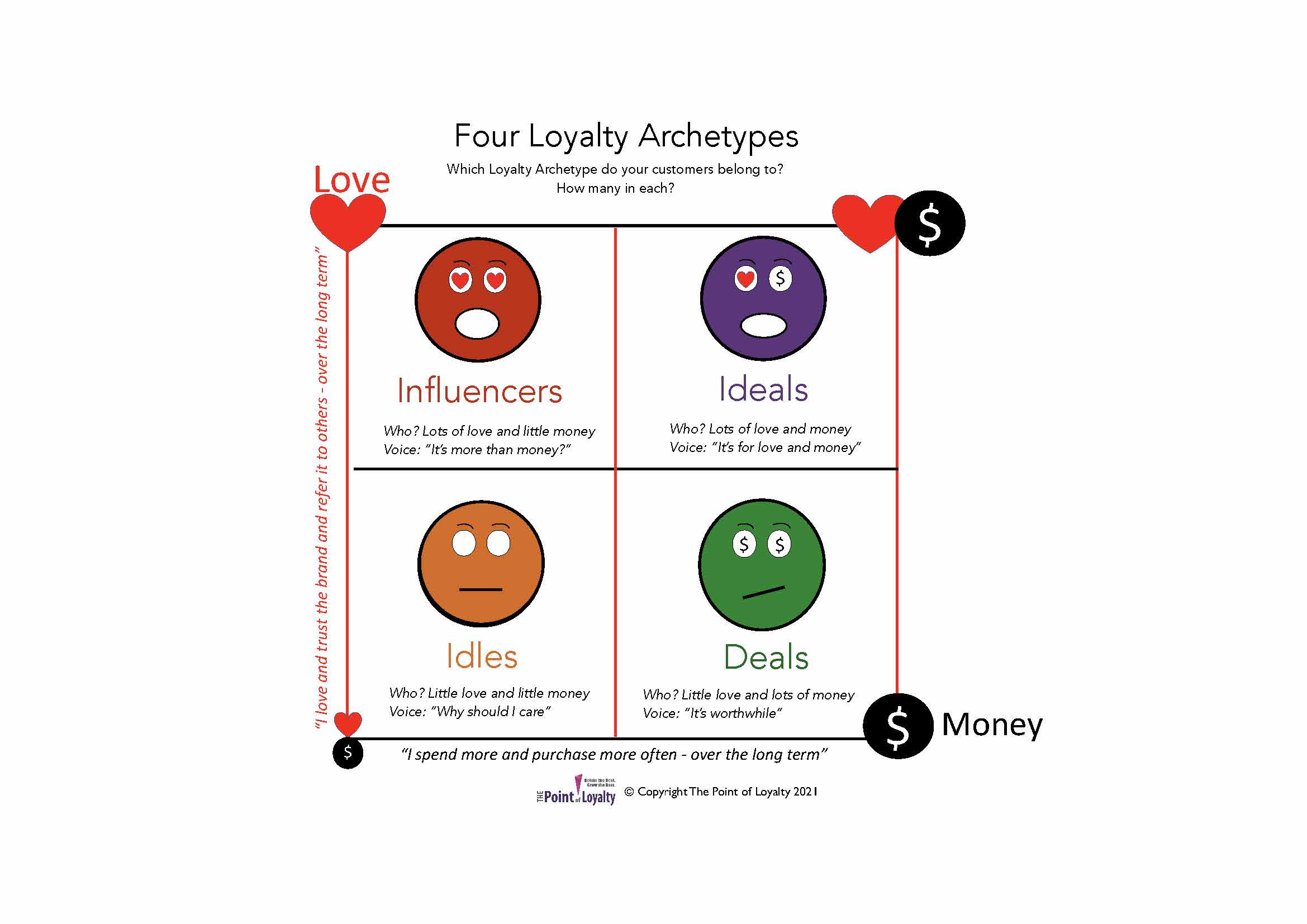Loyalty is not a program. What is loyalty?
Before working out which of the Four Archetypes your customers belong to, let’s define what loyalty is to a brand - beyond enrolling in a loyalty program.
Why? When you have clarity and alignment in your business on what loyalty to your brand/business is, you will then have the power to influence loyalty for profitable business growth.
For the past 5 years, I have been researching loyalty to a brand/business from a consumer’s point of view (beyond enrolling in a loyalty program) in our benchmark loyalty research study For Love or MoneyTM.
In each study, 11 dimensions of loyalty to a brand/business are identified and provided to consumers to determine a ranking of what they believe loyalty to a brand is.
Tracking these results, I have determined a definition of loyalty to a brand/business:
Loyalty is both behaviour and belief.
Adam Posner - Author of For Love or MoneyTM.
Behaviour is a transactional interaction identified by spending more and purchasing more often over the longer term. It’s about ‘money’.
Belief is an emotional connection where trust is inherent and personal recommendation is the proof. It’s about ‘love’.
Loyalty is never static nor does it exist in a vacuum of no competitors.
Ok, so now what?
The Four Loyalty Archetypes
As mentioned above, once you know what loyalty is, you can then determine by which dimension, your customers are ‘loyal’ - love and money.
To help you, I have created The Four Loyalty Archetypes.
This is based on the X axis of Money (Behaviour) and Y axis Love (Belief).
Which of these Four Loyalty Archetypes do your customers belong to?
Idles:
Who are they: They represent ‘little love and little money’.
They have little or no emotional connection to the brand and might be inactive, lapsed or left the brand. They are low or no-spenders. They are the IDLES.
What’s the voice in their head saying about your brand/business: ‘Why should I care?’
The action to take: Reactivate with reasons to emotionally connect or invigorate with reasons to spend. Or maybe ignore them as they are not worth the effort (harsh!). If apathy is the issue, then the question is - do they have the potential to be moved towards ‘love’ and/or ‘money’?
(How you do this is specific to your brand and the offering you provide your customers and a test-and-learn implementation is key!)
Influencers:
Who are they: They represent ‘Lots of love & little money’.
They are fans of the brand, word-of-mouth advocates with little or no spend. They are the INFLUENCERS.
What’s the voice in their head saying about your brand/business: ‘my connection to the brand is more than money’.
The action to take: Identify why they love your brand but do not transact as much. Retain the ‘love’ and reinforce the reasons for max. love (if you can identify the reasons). Provide more relevant reasons to spend more.
NOTE: While these customers are not heavy spenders, they are your advocates and are referring new clients/customers to your brand or business, generating money in a different way – new customers.
Deals:
Who are they: They represent ‘little love & lots of money’.
They are not emotionally connected to the brand (why?), however they transact often and spend high (what makes them worth so much?) They are the DEALS.
What’s the voice in their head saying about your brand/business: ‘it’s worthwhile being connected to the brand/business’
The action to take: Retain the money (they are valuable) and work on creating more emotional connections so ‘love’ grows.
Ideals:
Who are they: They represent ‘lots of love & lots of money’.
They are the Influencers and Deals in perfect harmony – they are the IDEALS.
What’s the voice in their head saying about your brand/business: ‘I love the brand and its worthwhile transacting with the brand/business’
The action to take: Retain the love and the money. They are valuable in both revenue and referrals.
I have not provided any specific examples or detailed actions in this model as this will depend on many factors.
However, I believe that once you know which of the four archetypes of loyalty your customers belong to, you can then develop the strategies and actions to influence their loyalty (love and money) to your brand/business.
In summary, consider the following steps:
- Determine what loyalty to YOUR brand/business is from your customers point of view? (we have helped brands do this)
- Classify your customers into the Four Loyalty Archetypes (you can use this model or tailor your own)
- Determine the strategies and actions to take to move towards the IDEALS
Have a happy loyalty day!


